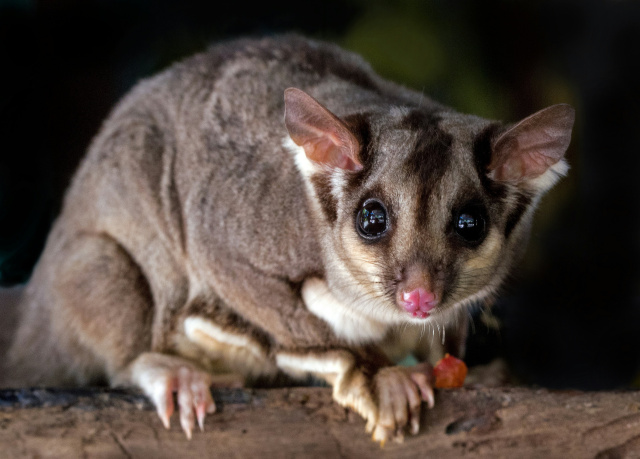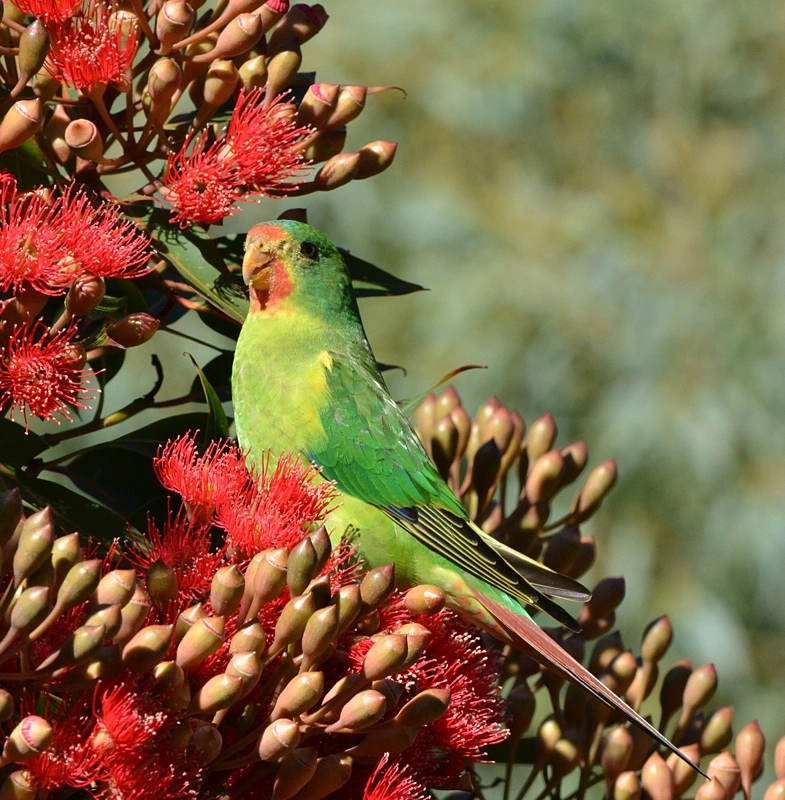Bruny and Maria Island critical for Swift Parrot's survival
Bruny Island
That listing is based on modelling of the projected population trajectory. Based on data from 289 Swift Parrot nests monitored over 10 years, for reproductive success or failure, the model is forecasting a decline in total population size of 92.3% in 11 years. If this continues, this bird is plummeting towards extinction.
Now the major factor going into that model which is causing nest failure is predation by an invasive species and that's the Sugar Glider, or more correctly Krefft's Glider. At night the gliders go into the nesting hollows that the Swift Parrots are using and they eat the eggs, the nestlings and the incubating adult females. Of all those nests that they monitored on the Tasmanian mainland 70% of nests failed to produce any fledglings at all and more than a quarter of the adult females that were incubating were eaten by gliders.
So the population is actually going backwards. Now, the one thing that has kept the Swift Parrot going, is that there are two islands, Bruny Island and Maria Island, where there are no gliders. And on these islands, the birds can breed successfully if there is sufficient food.
So that is counter-balancing the losses that are happening on the Tasmanian mainland. So the more Swift Parrots nest on Bruny Island and Maria Island, the better it is for the total population.

So the population is actually going backwards. Now, the one thing that has kept the Swift Parrot going, is that there are two islands, Bruny Island and Maria Island, where there are no gliders. And on these islands, the birds can breed successfully if there is sufficient food.

That listing is based on modelling of the projected population trajectory. Based on data from 289 Swift Parrot nests monitored over 10 years, for reproductive success or failure, the model is forecasting a decline in total population size of 92.3% in 11 years. If this continues, this bird is plummeting towards extinction.
Now the major factor going into that model which is causing nest failure is predation by an invasive species and that's the Sugar Glider, or more correctly Krefft's Glider. At night the gliders go into the nesting hollows that the Swift Parrots are using and they eat the eggs, the nestlings and the incubating adult females. Of all those nests that they monitored on the Tasmanian mainland 70% of nests failed to produce any fledglings at all and more than a quarter of the adult females that were incubating were eaten by gliders.
So the population is actually going backwards. Now, the one thing that has kept the Swift Parrot going, is that there are two islands, Bruny Island and Maria Island, where there are no gliders. And on these islands, the birds can breed successfully if there is sufficient food.
So that is counter-balancing the losses that are happening on the Tasmanian mainland. So the more Swift Parrots nest on Bruny Island and Maria Island, the better it is for the total population.

So the population is actually going backwards. Now, the one thing that has kept the Swift Parrot going, is that there are two islands, Bruny Island and Maria Island, where there are no gliders. And on these islands, the birds can breed successfully if there is sufficient food.

You might like...

The Swift Parrot - An incredible bird

Blue Gums and Swifties

Swift parrots and introduced bees compete for nectar

Bruny Island nesting box project
Newsletter
Sign up to keep in touch with articles, updates, events or news from Kuno, your platform for nature

